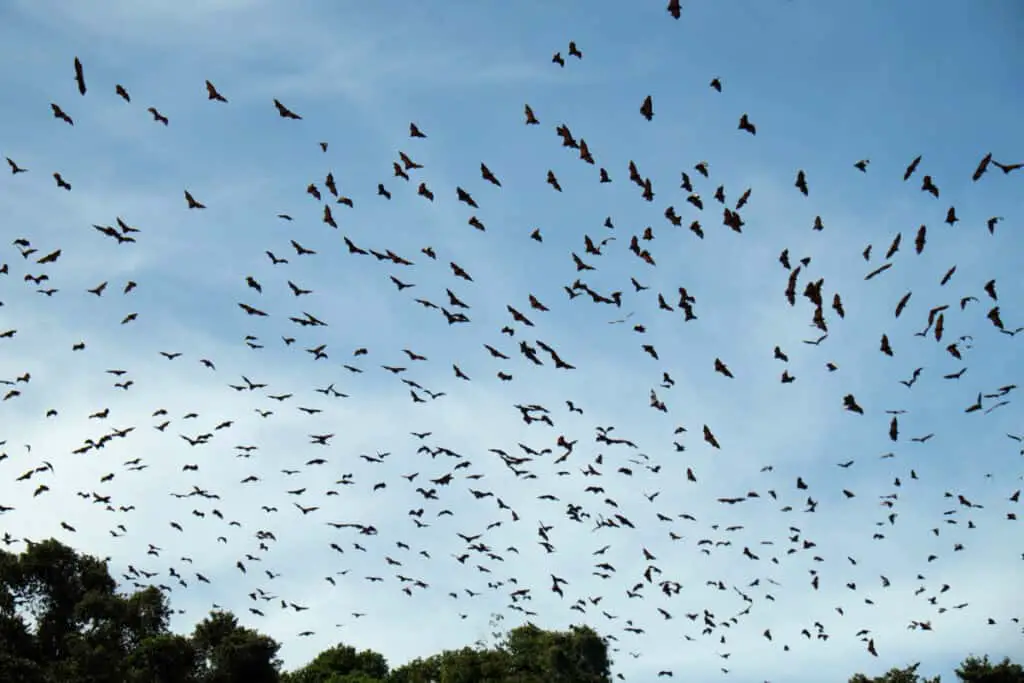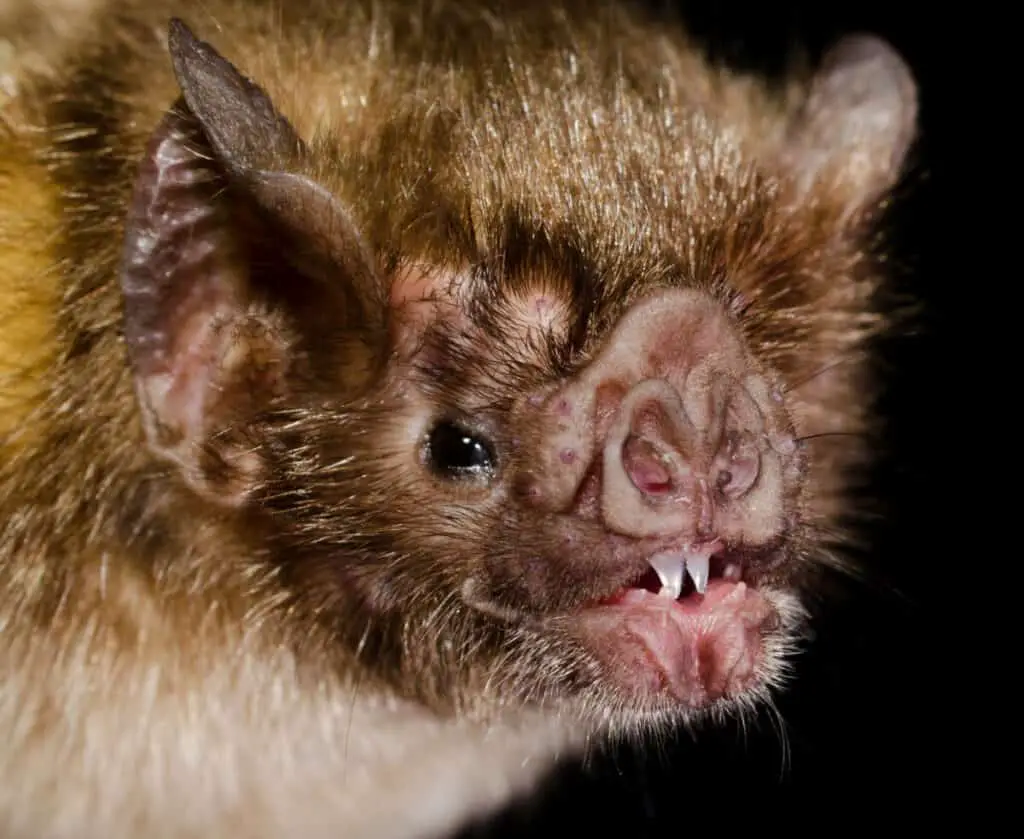Bats are a unique and fascinating group of mammals that have captured the attention and curiosity of scientists for centuries. They belong to the order Chiroptera, which is one of the largest mammalian orders in terms of species diversity.
Bats are widely distributed across the world, inhabiting diverse habitats ranging from tropical rainforests to deserts.
Despite their ecological importance, bats often remain misunderstood and undervalued by humans. For instance, many people still associate them with negative stereotypes such as disease transmission or vampire legends.
However, recent research has highlighted the numerous benefits that bats provide to ecosystems and human societies alike. This article aims to explore some of these fascinating aspects of bat biology and behavior while dispelling some common misconceptions about these remarkable creatures.

Species Diversity And Distribution
| Bat Species | Habitat and Geographic Range |
|---|---|
| Common Vampire Bat | Tropical and subtropical regions of the Americas, including Central and South America |
| Fruit Bat (Flying Foxes) | Various regions including Africa, Asia, Australia, and some Pacific Islands |
| Mexican Free-Tailed Bat | Found in the Americas, from the southern United States to Central and South America |
| Little Brown Bat | North America, including Canada and the United States |
| Egyptian Fruit Bat | Sub-Saharan Africa, Middle East, and parts of the Indian subcontinent |
| Greater Horseshoe Bat | Europe, North Africa, and parts of Asia |
| Lesser Long-Nosed Bat | Southern United States, Mexico, and Central America |
| Gray-headed Flying Fox | Australia, particularly along the eastern and southeastern coasts |
| Pallid Bat | Western North America, from Canada to Mexico |
| Straw-colored Fruit Bat | Sub-Saharan Africa, including countries like Kenya, Tanzania, and Uganda |
Echoing through the darkness of the night, one can hear the fluttering wings of a bat.
Bats are fascinating creatures that have captured the attention of scientists and nature enthusiasts alike. With over 1,400 species globally distributed across six continents (excluding Antarctica), bats make up about 20% of all mammal species.
Due to their unique characteristics such as echolocation and nocturnal behavior, they play an important role in ecosystem functioning.
Despite their ecological significance, many bat species face threats that jeopardize their survival. Habitat loss, climate change, disease outbreaks, and human persecution are some of the factors contributing to declining populations.
Conservation efforts are crucial for preserving these winged mammals and maintaining healthy ecosystems. Researchers continue to study various aspects of bat biology including genetics, physiology, ecology, and behavior to better understand how to conserve them effectively.
By increasing awareness about global distribution patterns and potential conservation strategies for different bat species, we can work towards securing a brighter future for these elusive but indispensable creatures.
Unique Adaptations For Flight
Wing structure is a crucial adaptation that enables bats to fly. Bats are the only mammals capable of sustained flight, and their wings have evolved in such a way as to provide lift and maneuverability in the air.
Unlike birds, which have feathers attached to their forelimbs, bat wings consist of skin stretched over elongated finger bones. The membrane between each finger acts like an airplane wing, generating lift when airflow passes over it during flight.
Another unique adaptation for flight possessed by bats is their echolocation abilities. Echolocation is used by many species of bats as a means of navigating through darkness or finding prey.
When flying at high speeds, using vision alone would be difficult due to lack of light available at night time. To compensate for this limitation, they emit high-frequency sounds from their mouths or noses and listen carefully to the echoes produced when these sounds bounce off objects in their path.
By interpreting these echoes with great accuracy, bats can locate obstacles and prey while flying through complete darkness. This ability allows them to catch insects mid-flight with remarkable precision.
Ecological Importance Of Bats
Unique Adaptations for Flight are essential for the survival of many animals. Among these adaptations, perhaps none is as remarkable as that of bats. Bats have been able to evolve wings and fly, making them one of the only mammals capable of sustained flight. However, their adaptation goes beyond just flying; they also possess unique echolocation abilities that allow them to navigate in complete darkness.
The Ecological Importance of Bats cannot be overstated. They play a vital role in pollination services, which helps maintain healthy ecosystems. In addition to this, they also provide pest control by feeding on insects such as mosquitoes and crop pests.
Without bats’ pollination and pest control services, our agricultural systems would suffer greatly, leading to food shortages and negative economic impacts. Thus, it is crucial that we continue to study and protect these nocturnal creatures so that they can continue to contribute positively to our planet’s biodiversity.
- Pollination Services:
- Fruit production
- Seed dispersal
- Maintaining plant diversity
- Pest Control:
- Mosquitoes
- Crop pests
- Reducing pesticide usage – Reducing pesticide usage and promoting ecological balance in the ecosystem
Misconceptions And Negative Stereotypes
Dispelling myths and negative stereotypes surrounding bats is crucial in ensuring their survival. Many people believe that all bats are vampire creatures that suck blood, but this is not true. In fact, only three out of over 1,400 species of bats feed on blood, and they do so by lapping it up rather than sucking it. Additionally, many people fear that bats carry diseases such as rabies or SARS-CoV-2 (the virus responsible for COVID-19), but the truth is that most bats are harmless to humans and play a vital role in maintaining ecosystems.
Cultural significance also highlights the importance of understanding and appreciating these misunderstood creatures. Bats have played significant roles in various cultures throughout history. For example, the ancient Mayans believed that bats were messengers between the world of the living and the dead. In Chinese culture, bats are symbols of good fortune and happiness because their name sounds similar to words meaning “luck” or “prosperity.” By acknowledging and respecting cultural beliefs about bats, we can promote greater appreciation for them and increase efforts towards conservation.
The Sensory World of Common Vampire Bats: How Good Are Their Senses?
Benefits To Ecosystems And Human Societies
Bats play a vital role in maintaining healthy ecosystems worldwide. As pollinators, seed dispersers, and insectivores, bats contribute significantly to the balance of various ecosystems. Many plant species depend on bats for their reproduction, as they help spread pollen from one flower to another.
Bats also consume vast amounts of insects each night, including those that cause crop damage or transmit diseases such as malaria. By controlling insect populations, bats reduce the need for pesticides that can harm other wildlife.
Conservation efforts aimed at protecting bat populations not only benefit ecosystems but also have significant economic impacts. The agricultural industry benefits from reduced crop damage caused by insect pests controlled by bats’ natural predation methods. Similarly, fewer cases of mosquito-borne illnesses save money spent on medical treatments and lost workdays due to illness.
Additionally, some species of bats are used in biomedical research because their unique immune systems make them highly resistant to certain viruses like COVID-19. Overall, conservation efforts towards protecting these essential mammals provide both ecological and financial advantages to human societies worldwide.

Future Conservation Efforts
The benefits that bats offer to both ecosystems and human societies are undeniable. However, these creatures face numerous threats, such as habitat loss and disease outbreaks. To ensure their survival for future generations, it is crucial to implement conservation efforts that address these issues.
Innovative technologies can play an essential role in bat conservation efforts. For instance, acoustic monitoring devices can be used to track bat populations and identify important roosting sites. In addition, satellite tracking technology can provide insights into bat migration patterns and help researchers better understand the habitats they rely on during different times of the year.
International collaboration is also critical in conserving these animals effectively. Bats often migrate across borders, making it necessary for countries to work together to protect them throughout their range. By sharing information about research findings and best practices, experts from around the world can develop more effective strategies for protecting bat species globally.
Moreover, international collaborations could facilitate the development of policies that prioritize the protection of bats’ habitats while promoting sustainable land use practices. This approach would require a coordinated effort between governments, organizations, and local communities worldwide to reduce deforestation rates and expand protected areas where bats thrive.
With innovative technological advances coupled with international collaboration amongst scientists and policymakers alike will pave the way towards better understanding our winged friends while ensuring their preservation for years to come without compromising other ecological or economic interests in any region of the globe.
Conclusion
Bats are an incredibly diverse group of animals found in almost every corner of the world.
With over 1,400 species known to science, they demonstrate a remarkable range of adaptations for flight that have enabled them to occupy some of the most challenging and unique ecological niches on Earth.
Despite their importance as pollinators, seed dispersers, insectivores and more, bats continue to face misconceptions and negative stereotypes that threaten their survival.
However, with increasing awareness around the benefits that bats provide to ecosystems and human societies alike – from controlling agricultural pests to providing essential ecosystem services – there is hope for these remarkable creatures.
Through conservation efforts like habitat restoration and education campaigns aimed at dispelling myths about bats, we can ensure that future generations will be able to appreciate these fascinating animals and all that they do for our planet.
